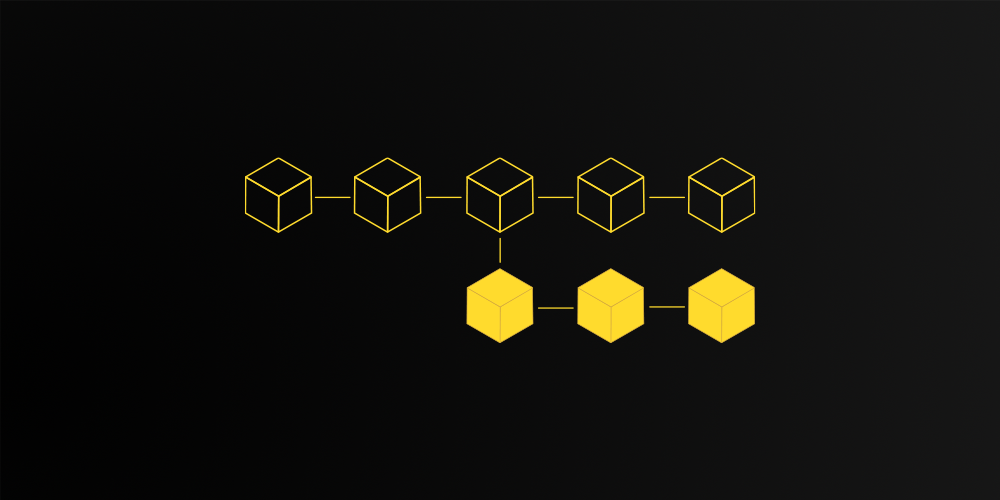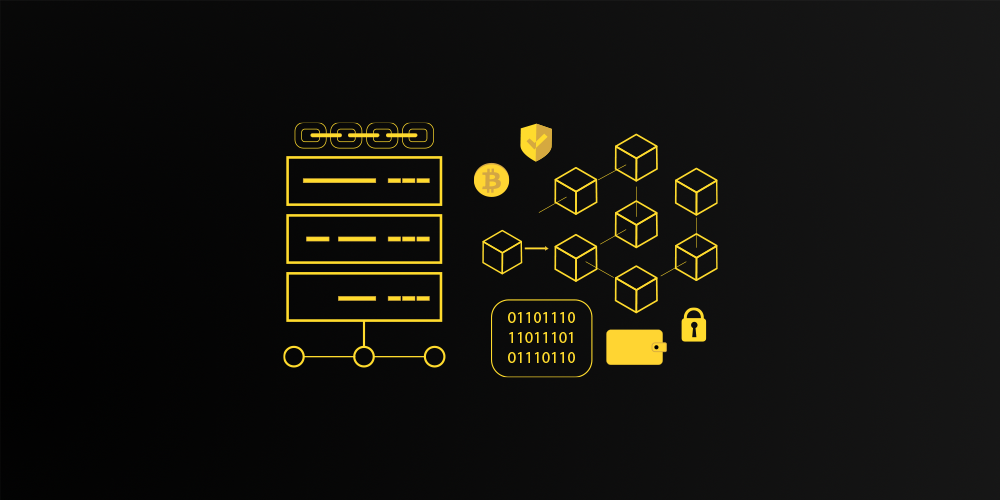Architecting the Future: How Advanced BUIDL Shapes Blockchain Infrastructure
The concept of Advanced BUIDL in Cryptocurrency is redefining how we approach blockchain architecture by emphasizing modularity and scalability in design. This innovative mindset encourages developers to create protocols that are not only functional but also adaptable to the rapidly evolving landscape of decentralized technologies.
One of the critical aspects of this evolution is the focus on protocol development that can seamlessly integrate with various existing systems. By prioritizing interoperability, projects can foster collaboration across different blockchain networks, making it easier for users to navigate these ecosystems. This cross-pollination of ideas and functionalities enhances the overall user experience while driving adoption.
Another significant component of architecting the future is the implementation of on-chain governance. By leveraging decentralized decision-making processes, communities can more effectively manage protocol upgrades, ensure sustainability, and mitigate risks. This type of governance not only reinforces the principles of decentralization but also encourages active participation from stakeholders, which is essential for long-term success.
In parallel, the focus on tokenomics sustainability plays a pivotal role in ensuring that projects maintain their economic viability. By designing tokens that align incentives for stakeholders, developers can create a thriving ecosystem that drives continuous growth and innovation. This balance between utility and value is crucial as more projects enter the competitive crypto space.
The strategic direction offered by Advanced BUIDL empowers developers and enthusiasts alike to think outside the box, fostering an environment where cross-chain innovation is not just a possibility, but a reality. As these principles continue to take root, they will undoubtedly lay the groundwork for a more resilient and interconnected blockchain future.
Tokenomics and Sustainability: Building Economically Viable Blockchain Projects
In the evolving landscape of cryptocurrency, the principles of tokenomics sustainability play a pivotal role in ensuring that blockchain projects are not only innovative but also economically viable. The integration of well-structured tokenomics models allows projects to align incentives among stakeholders, ensuring the long-term success and sustainability of their respective ecosystems.
Advanced BUIDL in Cryptocurrency seeks to address many of the challenges inherent in traditional financing models. By focusing on protocol development that incentivizes community engagement and supports decentralized governance, projects can foster a resilient and participative environment. Enhancements in blockchain architecture enable more efficient allocation and utilization of resources, steering away from speculative elements that can plague projects.
Moreover, the concept of cross-chain innovation adds another layer to the sustainability discourse. By enabling various blockchains to interact seamlessly, projects can reach broader markets and user bases. This interconnectedness maximizes the utility of tokens and ensures a diverse range of applications, crucial for stable growth.
Successful projects must emphasize a balance between on-chain governance and user-driven decision-making. By incorporating democratic principles into their frameworks, they can adapt and thrive in a rapidly changing market landscape. Through the lens of advanced BUIDL strategies, the future of blockchain projects can be secured with sustainability at their core.
Cross-Chain BUIDLing: Driving Interoperability Across Decentralized Networks
In the rapidly evolving world of cryptocurrency, cross-chain innovation has emerged as a pivotal approach to enhance the functionality and usability of decentralized networks. The core objective of this strategy is to enable seamless interaction between different blockchains, allowing assets, data, and applications to flow freely across various ecosystems. This not only improves user experience but also paves the way for collaborative development across platforms.
One of the key benefits of blockchain architecture that supports cross-chain capabilities is the enhanced scalability it offers. By bridging multiple chains, developers can distribute workloads, thereby reducing congestion and decreasing transaction times. This interoperability can transform isolated networks into a cohesive ecosystem, encouraging wider adoption and fostering an environment ripe for protocol development.
Moreover, the integration of cross-chain technology contributes significantly to tokenomics sustainability. It facilitates the creation of new economic incentives and models that can thrive across multiple environments. By leveraging assets from various chains, projects can devise innovative use cases that attract more users and promote consistent engagement.
Driving on-chain governance in cross-chain contexts allows communities to have a lasting impact on their networks, encouraging participation and democratizing the decision-making process. This ensures that the evolution of any blockchain ecosystem considers the diverse needs of stakeholders across the board, ultimately leading to a more robust and resilient infrastructure.
Decentralized Governance in the BUIDL Era: From DAOs to Protocol Councils
In the rapidly evolving landscape of blockchain, decentralized governance has emerged as a crucial aspect of advanced BUIDL in cryptocurrency. This paradigm shift empowers communities by allowing them to collectively make decisions through decentralized autonomous organizations (DAOs) and protocol councils. Unlike traditional governance structures, these new models enable stakeholders to actively contribute to the evolution of projects, enhancing both engagement and accountability.
DAOs have become increasingly popular, as they facilitate on-chain governance through smart contracts, making the decision-making process transparent and inclusive. Participants can propose changes, vote on key issues, and even allocate funds, all while maintaining a fair and democratic environment. This level of governance not only fosters a deeper connection among community members but also aligns with the principles of decentralization that underpin blockchain technology.
Moreover, as protocol development continues to innovate, many projects are adopting hybrid governance models that combine elements of both DAOs and centralized decision-making. This evolution allows for efficient yet equitable governance structures, balancing agility and decentralization. These hybrid frameworks can prove advantageous in areas such as tokenomics sustainability, where informed decisions are necessary to maintain economic viability.
The transition towards decentralized governance is also significantly impacting cross-chain innovation. As interoperability becomes essential for the growth of decentralized networks, effective governance structures can facilitate collaboration between different protocols. This collaboration not only expands the reach of blockchain solutions but also enhances the overall ecosystem, driving growth through shared resources and innovative ideas.
In the rapidly evolving landscape of cryptocurrency, the integration of AI, security, and scalability represents the next significant leap in the philosophy of Advanced BUIDL in Cryptocurrency. As blockchain architecture continues to mature, projects must prioritize robust security protocols to safeguard against the increasing sophistication of cyber threats. This ever-present risk calls for innovative approaches in protocol development, where AI-driven models can analyze network behaviors and predict vulnerabilities before they can be exploited.
Moreover, scalability remains a critical concern in achieving mass adoption of decentralized applications. By leveraging AI, developers can optimize transaction processing speeds and reduce congestion on the network, thus enhancing user experience. This synergy between AI and blockchain technology not only facilitates smoother operations but also supports the ultimate goal of achieving tokenomics sustainability by ensuring that resources are utilized efficiently.
The drive toward cross-chain innovation also benefits greatly from advancements in AI. With multiple networks emerging, the ability to seamlessly interact across chains allows for greater asset utility and liquidity. Enhanced security measures interwoven with AI analytics can ensure that these transactions are safe and reliable, fostering trust in the ecosystem.
The intersection of AI, security, and scalability introduces transformative opportunities for the future of BUIDLing. As the community embraces these advancements, the potential exists to redefine on-chain governance, promising a more cohesive and sustainable blockchain ecosystem for all participants.
Frequently Asked Questions
What does BUIDL mean in the cryptocurrency context?
BUIDL is a play on the word ‘build’ in the cryptocurrency community, emphasizing the importance of developing and creating innovative blockchain solutions rather than just speculating on digital assets.
What are some advanced BUIDL strategies discussed in the article?
The article discusses strategies such as decentralized finance (DeFi) development, cross-chain interoperability, and the implementation of layer-2 scaling solutions to enhance blockchain functionality.
How does innovating blockchain architecture contribute to ecosystem growth?
Innovative blockchain architecture can enhance scalability, security, and user experience, which in turn attracts more users and projects to the ecosystem, facilitating overall growth.
What role does community involvement play in BUIDL strategies?
Community involvement is crucial as it fosters collaboration, knowledge sharing, and grassroots support, all of which are vital for successful project development and adoption in the cryptocurrency space.
Can you explain what layer-2 solutions are?
Layer-2 solutions are secondary frameworks or protocols built atop a blockchain to increase transaction throughput and reduce costs by offloading processing from the main chain.
What are the benefits of cross-chain interoperability?
Cross-chain interoperability allows different blockchain networks to communicate and share information, increasing liquidity, user access, and fostering a more integrated ecosystem.
Why is it important for projects to prioritize sustainability in their BUIDL strategies?
Prioritizing sustainability ensures that projects minimize their environmental impact and operate efficiently, which can improve public perception, attract eco-conscious investors, and ensure long-term viability.
Disclaimer
The information presented in this article is for educational and informational purposes only. It does not constitute financial, investment, or legal advice. The discussion of Advanced BUIDL in Cryptocurrency and related blockchain strategies reflects general industry insights and should not be considered a direct recommendation.
Cryptocurrency projects carry inherent risks, including market volatility, regulatory uncertainty, and technological vulnerabilities. Readers should perform their own due diligence and consult qualified professionals before making financial or technical decisions.
Darkex and its affiliates assume no responsibility for any financial losses, development outcomes, or project failures resulting from the use of this information. Engaging with blockchain projects or decentralized protocols is done entirely at your own risk.





